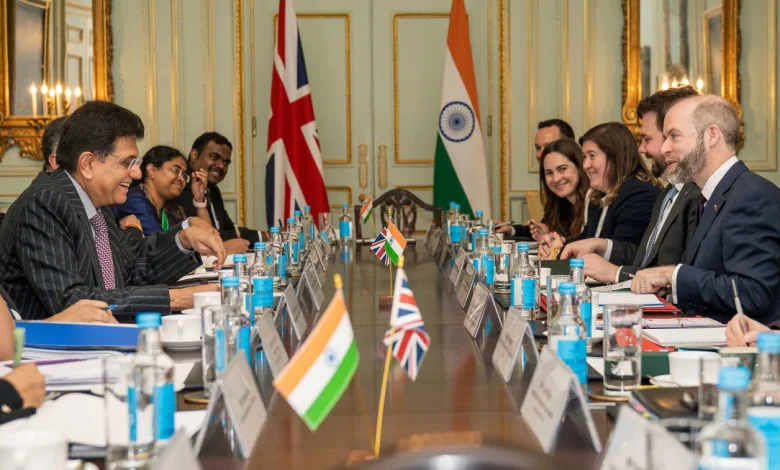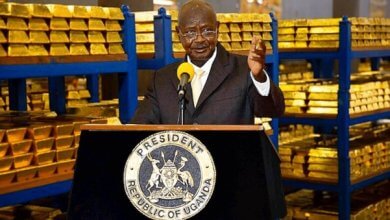India Signs Landmark Trade Deal with UK, Not the US
While the US raises tariffs and delays trade talks, India finalizes a major agreement with the UK that’s set to increase bilateral trade by over £25 billion annually. A closer look at what’s in the deal, what it means globally, and where the US stands.

- India has recently signed an agreement with UK Not US for Tariff Reductions or Elimination.
Britain Scores Big While Trump Talks Tough
While the Trump administration continues promising a sweeping trade agreement with India, Japan, or South Korea, it’s the United Kingdom that has quietly sealed the deal with India—marking the UK’s most economically significant trade pact since Brexit.
According to the UK Department for Business and Trade, the agreement is:
- The largest bilateral trade deal the UK has signed since leaving the European Union.
- Projected to boost trade between the UK and India by £25.5 billion ($34.1 billion) per year.
- Expected to increase total bilateral trade by 60% from 2024 levels.
In contrast, US negotiations with India remain unresolved, and a critical tariff deadline is fast approaching.
By the Numbers: UK–India Deal vs. US–India Trade Talks
| Metric | UK–India Deal | US–India Status |
|---|---|---|
| Signed Deal | Yes (May 2025) | No – Still in negotiations |
| Projected Annual Trade Increase | £25.5 billion / $34.1 billion | Undisclosed |
| Growth from 2024 Levels | 60 percent | None (pending agreement) |
| Tariff Reductions by India | Whisky, medical devices, lamb, machinery | Not applicable yet |
| UK Tariff Reductions on Indian Goods | Clothing, food, prawns, footwear | Not applicable |
| Tariff Phase-Out Timeline | Within 10 years | Not applicable |
| Deadline for US Reciprocal Tariffs | Not applicable | July 8, 2025 – up to 50% tariffs may apply |
Why This Matters
- UK’s Post-Brexit Pivot: The UK has actively pursued trade deals in the Indo-Pacific, following a similar 2020 agreement with Japan valued at £15.2 billion.
- India’s Trade Ascension: As the world’s fourth-largest economy, India is proving it has global leverage and is being courted by major powers.
- US Trade Risk: With President Trump’s 50% tariff threat due to kick in July, the absence of a US-India deal raises economic concerns.
Statements:
“We are now in a new era for trade and the economy.”
— UK Prime Minister Keir Starmer
“In light of recent trade wars and US tariff-related disruption, new partnerships that encourage free and open trade should be celebrated.”
— Emma Rowland, Institute of Directors
What’s in the Deal?
UK Exports to India – Tariff Reductions or Elimination:
| Product | Description |
|---|---|
| Whisky | Major win for Scotland’s spirits industry |
| Medical Devices | Tariffs cut on surgical and diagnostic equipment |
| Advanced Machinery | Boost for UK industrial exports |
| Lamb | Opens Indian market to British agricultural producers |
Indian Exports to UK – Tariff Reductions:
| Product | Description |
|---|---|
| Clothing and Apparel | Lower costs for UK consumers |
| Footwear | Increase in Indian footwear exports |
| Frozen Prawns | Cheaper seafood at British supermarkets |
| Processed Foods | Supports Indian mid-market consumer goods sector |
The US Position
Despite promising statements, no trade deal has emerged from Washington. The Trump administration has cited India, Japan, and South Korea as potential candidates, but negotiations remain stalled.
The pressure is mounting. If the US doesn’t finalize at least one agreement by July 8, reciprocal tariffs as high as 50 percent will begin applying to dozens of countries, potentially leading to:
- Trade retaliation
- Slower economic growth
- Rising import costs for American consumers
- Increased likelihood of a global recession
Quote from CNN:
“The clock is ticking down to zero, and Trump needs a trade deal — badly.”
Strategic Summary
| Key Takeaway | Implication |
|---|---|
| UK–India deal signed | Demonstrates UK’s ability to secure high-value bilateral pacts |
| US–India deal still pending | Increases economic uncertainty and risks ahead of tariff deadline |
| India’s growing influence | Positions India as a sought-after trade partner in a shifting global economy |
| Preference for trade alliances | Indicates a global pivot toward liberalization over tariff escalation |




